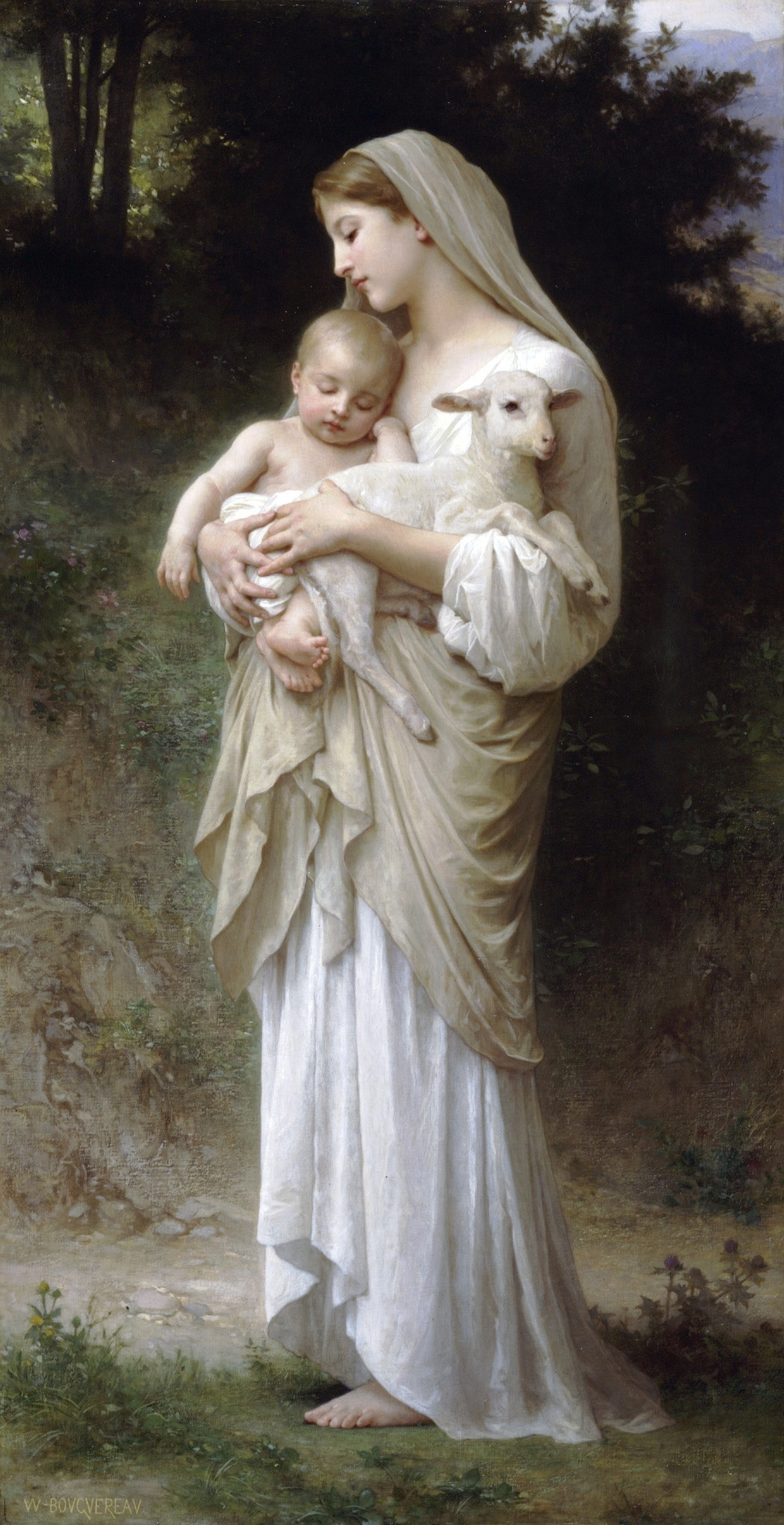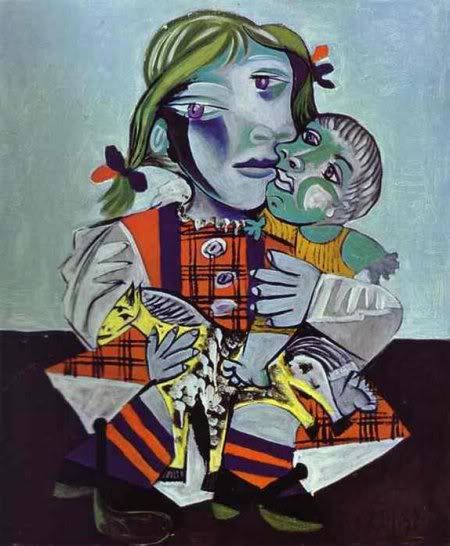What’s Wrong With The World Part XVI —Ugly
Ugly
I had always, even from earliest youth, known that something had gone terribly wrong with the world at about the time of the industrial revolution. Up until about the time of the Victorians, and lingering in every dwindling spots and spasms up until the Great War, music still displayed harmony and melody, poetry still spoke like music, painting looked like what they represented, novels contained matter to delight the senses, inspire the soul, and educate the mind.
Then something happened; Something horrible.
If a primordial monstrosity from a novel by H.P. Lovecraft had risen from the deep and driven all mankind instantly into screaming paroxysms of insanity, the magnitude of what happened could not have been greater.
Something horrible happened. Beauty died.
The first thing a traveler brought forth from the past would notice, if escorted by the Ghost of Christmas Past or the time machine of H.G. Wells into a modern industrial center or modern museum of the fine arts, is the overwhelming ugliness of the age.
If the illustrators of science fiction magazines are to be believed, the happy inhabitants of eons yet to come will dress in toga, cape and tunic, with an eye toward splendor and elegance of dress, just as our Medieval and Ancient ancestors did. Only the modern age is drab and smoggy.
To be fair, the workingmen and slaves of the ancient world dressed in rags, and there is nothing particularly fine to the eye about a hut or wigwam: and yet the particular genius of the modern day is not the accidental ugliness which comes from a lack of craft, but the snidely insolent and deliberate ugliness when pursued for its own sake.
There has never been anything like it in history. It is masochism.
Yes, it is deliberate. Instead of Phideas or Michaelangelo we have this: “A fiberglass sculpture of several conjoined girls, some with anuses for mouths and semierect penises for noses, all naked except for sneakers on their feet” Also “flayed corpses, sliced animals in formalin, a close-up photograph of a gunshot wound to the scalp, and … a scaled-down but hyperrealistic model in silicone and acrylic of a naked corpse.” (These are from a 1998 exhibition of modern British art at the Royal Academy of Art in London. http://www.city-journal.org/html/8_1_urbanities-trash.html)
As for music, merely turn on your radio, where you can, among the mindless banging noises that pass for rhythm, hear tuneless voices chanting or shouting rather than singing, and, if you can make out the words, you are likely to encounter words in praise of cop-killing and whore-slapping.
As far dance, it is formless and unromantic: mere spastic jerking. Who, these days, performs the waltz? Poetry is as formless and incomprehensible. Modern painting has passed beyond absurdity and visual gibberish into the realm of deliberate self-parody: rows of Campbell soup cans.
In novels, as far as I can tell, the only place real art is being attempted is in genre fiction, particularly in science fiction. Mainstream novels are concentrating on formless stream-of-consciousness depictions of adultery, suicide, dipsomania, and human degradation and perversion so central to the nihilist core of nonbeing that forms the formless heart of heartless modernism.
The first time I saw a reproduction of a Picasso drawing in the home of a friend, I assumed it was a drawing done in kindergarten by my friend’s little sister, hung up on the wall by an adoring parent. Much friend had much ado to convince me otherwise.
Likewise, when an even closer friend showed me a crude and dun-colored plate, I assumed it was an art project done by a fifth grade child, someone unable to spin clay on a potter’s wheel, or unable to select or apply colors. But no, the plate was the handicraft of some allegedly famous artiste, and the lopsided unroundness and the sewage-hued drab of the tint were allegedly not only deliberate, but allegedly sublime. The friend was reduced to tears, because, before I found out it was a work of art, I recoiled from the ghastly thing with a laugh and gave an honest opinion.
Modern courtesy, like modern art, is a mechanism for deterring honest opinions. If no one can tell the difference between fair and foul, and if pompously ungainly or horridly crude waste-pieces are extolled as the most precious artistic treasures of collectors unduly sensitive to criticism, the only polite thing a modern man can do to avoid giving offense is make no judgment whatever between fair and foul. But who would deliberately put himself in such a position, and for what reason? Sane people like pretty things. Who wants to jar his eyes by exposing those delicate orbs, as if to a spray of vinegar, to deliberately unsightly rubbish?
It was, of all people, the vituperative and vehement Ayn Rand who uttered a theory of aesthetics to explain this otherwise inexplicable adoration of ugliness for the sake of ugliness.
Her theory is that art expresses on a concrete level the artist’s sense of life, the same thing that a philosopher expresses on an abstract level. The music and dance and decoration and painting, the plays and songs and stories of a culture display exemplify what that culture values.
The ancient Greek carved and polished statues of men in the heroic mold because the Greek had a heroic view of life, where the purpose of life was arete, virtue, godlike virtue, and the heroes of old were sons of the gods; whereas the ancient Aztec erected monstrous statues of vampirishly bloodthirsty gods with their staring eyes and protruding tongues because their view of life and man’s role in life was monstrous. Art is the representation of the highest values on a sensory level.
What does modern art represent? It represents modern values, which Ayn Rand (in my judgment, correctly) identifies as: vulgarity, unreason, malformation, meaninglessness, mindlessness, morbidity.
This horror that has overwhelmed the arts is not an accident, nor an attempt to carry out some bold new theory of aesthetics. It is a consequence of the same rules of aesthetics that have always obtained, merely, now that the moderns have lost sanity and conscience, their love of goodness and their sense of humanity, the moderns can only portray the vomit and dung sticking to the floor of the dungeons of hell.
Some small traces of goodness and beauty remain among popular art, in genre novels, in movies: the closest thing we have to a symphony are the musical scores of John Williams, for example. The best drawings of the human figure I have seen recently were in a comic book, not in a museum of modern art. The work Maxfield Parrish for magazine covers and commercial advertisements are superior in technique and genius than a entire body of work by Picasso.
Modern art is excrement.
Literally. Modern art includes a painting that consist of canvass with daubs elephant poop stuck on, or a crucifix in a jar of urine.
Philosophy cannot cure this: the whole of modern aesthetic theory consists of the simple slogan, empty yet endlessly repeated, that beauty is in the eye of the beholder, which is as much to say, beauty does not exist.
The sentiment is not an attempt to explain the nature of beauty, but to explain it away. It is the asseveration that beauty has no nature. Like the polylogists saying logic is arbitrary, or the Political Correctors saying words are arbitrary, or relativists saying ethics are arbitrary, the claim here is that what is found beautiful is merely arbitrary. I have dwelt on these errors and insanities in other paragraphs, and need say no more here except to mention that the beautiful symmetry is repeated.
The sentiment that beauty is in the eye of the beholder is not only false, it is a sentiment all find ugly, including those sick souls attracted to ugliness find it so (albeit they rejoice rather than vomit at its practice, because their passions and hence their tastes are objectively disordered). Therefore even if this ugly sentiment were true, it could be condemned on the ground alone that is it ugly.
In the same way that education in the passions was once meant to train the unruly passions from their crude and natural and to more noble dispositions, education in music and poetry was meant to train the tastes, so that students would learn to love the fair and fine and abhor the foul or vulgar.
In the modern day, the goal and ergo the methods of training the taste serve the opposite: our culture seeks to condition the young to admire the foul and flee the fair. This will give the young in later life the ability more easily to tolerate and pursue ugliness on the moral plane, which is called vice, perversion, abomination, and the ability to tolerate and accept asymmetry on the intellectual plane, which is called unreason, doublethink, hypocrisy.
Those of you who have read C.S. Lewis’ THAT HIDEOUS STRENGTH will recall a scene in the ‘objectification room’ where the main character was introduced to an environment where everything was subtly or grossly wrong-sighted, arbitrary, meaningless, asymmetrical, or grotesque. That image is the image of a modern museum of fine art.
I expect never to see any return to the good and the beautiful in the fine arts while Western Civilization endures: there are some things, once broken, that no human power can put right.


